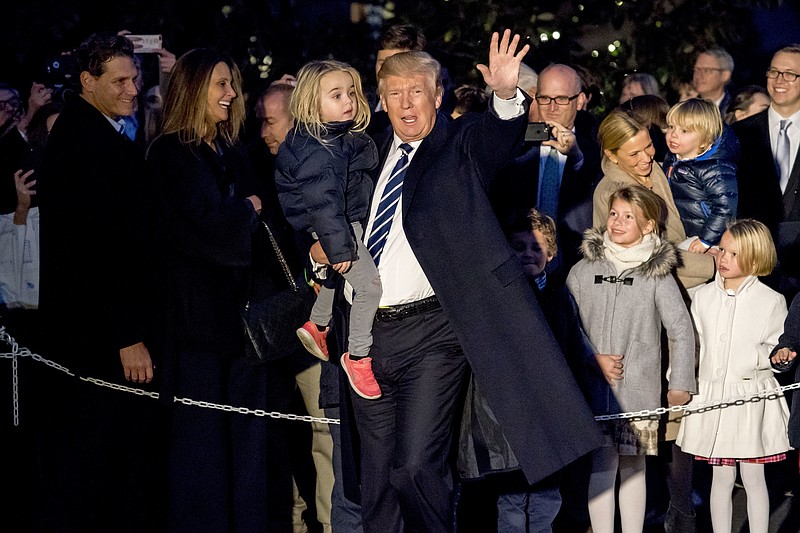MUMBAI, India - In a recent MSNBC interview I described President Donald Trump as a "brain-eating disease."
I did so because his indecent behavior, and nonstop outrageous tweets and actions, force you as a commentator into a terrible choice: either ignore it all and risk normalizing Trump's excesses or write about him constantly and risk not having the time to learn and report about the big trends now reshaping the world - trends that one day will surprise your readers and leave them asking, "Why didn't I know this?"
To inoculate myself against Trump eating my brain, I occasionally get as far away as I can. This time it was to India, where I learned a ton that I didn't know: I found India trying to leapfrog out of poverty and catch up to China by engaging in a rapid digitization of its entire economy and power grid.
Yes, while our president has been busy playing golf, tweeting about LaVar Ball and pushing an anything-that-will-pass tax plan, China has been busy creating a cashless society, where people can pay for so many things now with just a swipe of their cellphones - including donations to beggars - or even buy stuff at vending machines with just facial recognition, and India is trying to follow suit.
Those are big trends, and in a world where data is the new oil, China and India are each creating giant pools of digitized data that their innovators are using to write all kinds of interoperable applications - for cheap new forms of education, medical insurance, entertainment, banking and finance.
I was blown away by one big change in India in particular. In 2009, my friend Nandan Nilekani, the tech entrepreneur, led a team of experts that helped the then-Congress Party-led government launch a national digital identity system, known as Aadhaar (Hindi for "base").
The digital network platforms that have broken the 1-billion-plus user mark - like Facebook, Google and WhatsApp - all came out of the private sector. Aadhaar, noted the Harvard Business Review, is the only non-U.S. platform "to have broken the 1-billion-user threshold and the only such system to have been developed by the public sector." It also has the distinction of "having reached 1 billion users the fastest."
Now any Indian farmer can just go to one of 250,000 government community centers - each with a computer, Wi-Fi and a local entrepreneur who manages it - log into a government digital services website with the farmer's unique ID and instantly print out a birth certificate or land records needed for transactions.
Nilekani and his wife, Rohini, have built a foundation, EkStep, to create mobile education apps to help parents, teachers and students - armed only with cellphones - to learn faster, using these new digital networks. As Shankar Maruwada, an EkStep co-founder and its CEO, explained: Unlike, say Facebook, whose business model is to "retain your attention," EkStep, Aadhaar and other such "societal platforms" are designed to "restore your agency," particularly to the poor.
Similar innovations are going on in energy, explained Mahesh Kolli, president of Greenko, India's largest renewable power provider. Theft of electricity from state-owned distribution companies amounted to some 20 percent of their output, as people strung wires to siphon from the grid, or the companies could not identify users.
Now the government "can link my unique ID to my electricity bill" and then directly and digitally connect my government subsidy, if I am poor, to that electric bill, said Kolli. Greenko just built the largest solar project in the world - a 3,000-acre field of Chinese-made solar panels generating 800 megawatts powering more than 600,000 homes in the state of Andhra Pradesh. Two more such fields are on the way up, all connecting to the national grid.
"No new coal or gas power plants are being built in India today," he added, "not because of regulations, but because solar, wind, hydro are all now able to compete with coal plants without subsidies."
So while we've been following Trump's tweets about bringing back "beautiful coal," India built a 1-billion-user ID network bigger than Twitter and giant solar power plants that are cheaper than coal.
That's what you missed - and that's just one country. Are you tired of winning yet?
The New York Times
